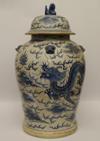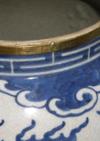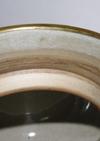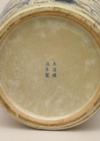Commenting is deactivated.
Please post all new topics and queries to the
Discussion Forum
Blue and white 'dragon' baluster vase and cover
by Chris
(Gloucester, Glos, UK)
Dear Peter
This vase seems unusual, it has 'gold' metal inlaid rims to the foot, the neck and on the edge of the lid (not gilt or painted). I've not seen another like it nor can I find any similar by doing an extensive Google picture search.
The mark on the bottom is Shunzhi though as you often say this may not be correct.
The vase glaze is crazed, and has yellowed in the cracks.
What are your thoughts on age and uniqueness.
Many thanks
Chris








